Implementing a robust Quality Assurance (QA) system is a key addition for Small and Medium-sized Businesses (SMBs) looking to improve efficiency, enhance customer satisfaction, and stay competitive in their industries. While large corporations often have dedicated QA departments, SMBs can benefit just as much from structured quality processes, even with limited resources. Afterall, a well-defined QA approach helps prevent defects, reduce waste, and ensure consistency in products and services, ultimately leading to higher customer trust and business growth. This article explores the key principles of QA, how companies can implement quality strategies, and the long-term benefits of prioritizing quality in daily operations.
What is Quality Assurance
The quality assurance process is a systematic and structured approach to ensuring that products, services, or processes meet defined quality standards and satisfy customer expectations. It focuses on preventing defects by improving the processes used to create a product or deliver a service, rather than simply identifying and fixing issues after they occur.
The QA process typically begins with understanding customer requirements and defining measurable quality objectives. It involves creating and implementing detailed plans, procedures, and workflows that guide the production or service delivery. Inspections, testing, and audits are conducted at various stages to verify compliance with standards, while defects or deviations are documented and addressed through corrective and preventive actions. Additionally, the QA process incorporates continuous improvement practices, relying on customer feedback, data analysis, and methodologies like Six Sigma or the PDCA (Plan-Do-Check-Act) cycle.
Key Aspects of Quality Assurance:
- Focus on Processes: QA emphasizes optimizing processes to produce high-quality outputs consistently.
- Preventive Approach: Unlike quality control, which focuses on identifying and fixing defects, QA aims to prevent defects by improving processes.
- Standards and Best Practices: QA aligns with industry standards, regulations, and best practices to ensure compliance and consistency.
- Continuous Improvement: QA is an ongoing process that evolves with changing requirements, technology, and customer expectations.
Typical QA Tools and Techniques:
- Process audits and reviews
- Checklists and documentation
- Testing frameworks (e.g., automated or manual testing in software)
- Statistical Process Control (SPC)
- Root Cause Analysis (RCA)
By fostering a culture of quality and adhering to QA practices, organizations can improve customer satisfaction, reduce costs associated with rework, and maintain a competitive edge in the market.
How Quality Assurance and Quality Control Are Different
Quality Control (QC) and Quality Assurance (QA) are both integral to maintaining high-quality standards, but they differ in focus and approach. Quality assurance is a proactive, process-oriented practice that aims to prevent defects by improving and standardizing the processes used to create a product or deliver a service. It emphasizes planning, documentation, and process optimization to ensure quality is built into every stage of production.
On the other hand, quality control is a reactive, product-oriented activity that focuses on identifying and correcting defects in finished products or services. QC involves inspection, testing, and evaluation of the output to ensure it meets the required specifications and quality standards. While QA is about designing and implementing processes to avoid problems, QC is about detecting and fixing problems that have already occurred.
Together, these practices form a comprehensive quality management system, with QA ensuring robust processes and QC ensuring that the final outputs align with expectations.
What Makes up a Quality Assurance Program
A quality assurance system comprises several interconnected components that work together to ensure that products, services, or processes meet established quality standards and satisfy customer requirements. These components form the backbone of a robust QA framework.
Key Components of a QA System
- Quality Standards:
- Defined benchmarks or specifications that the product or service must meet.
- Examples include ISO standards, industry-specific regulations, or company-defined criteria.
- Policies and Procedures:
- Guidelines outlining the principles and approach to achieving quality.
- Documented procedures for performing tasks, inspections, testing, and reviews.
- Quality Manual:
- A document summarizing the QA policies, objectives, and processes.
- Serves as a reference for all stakeholders to understand the QA framework.
- Process Control:
- Ensures that all production or service delivery processes are defined, monitored, and controlled to meet quality standards.
- Includes tools like process mapping and statistical process control.
- Quality Planning:
- Establishes how quality objectives will be met for a specific project or product.
- Involves identifying required resources, defining roles and responsibilities, and setting measurable quality targets.
- Inspections and Testing:
- Regular checks to verify that outputs meet predefined standards.
- Includes manual or automated testing, visual inspections, and performance evaluations.
- Documentation and Records:
- Keeps detailed records of processes, inspections, test results, and audits.
- Provides traceability and accountability, ensuring that quality issues can be investigated and resolved.
- Training and Competence:
- Ensures that employees have the necessary skills and knowledge to perform their roles effectively.
- Includes regular training programs and certification processes.
- Continuous Improvement:
- Focuses on refining processes and practices to enhance quality over time.
- Methods like RCA, Six Sigma, or PDCA cycles are used.
- Auditing and Monitoring:
- Periodic internal and external audits to evaluate the effectiveness of the QA system.
- Ensures compliance with standards and identifies areas for improvement.
- Risk Management:
- Identifies potential risks to quality and implements strategies to mitigate them.
- Includes risk assessment tools like Failure Mode and Effects Analysis (FMEA).
- Customer Feedback:
- Collects and analyzes feedback to understand customer satisfaction and identify areas for improvement.
- Includes surveys, complaints analysis, and direct input.
- Corrective and Preventive Actions (CAPA):
- Processes for addressing quality issues and preventing recurrence.
- Includes systematic root cause identification and solution implementation.
- Management Commitment:
- Strong leadership support for the QA system.
- Ensures adequate resources, prioritization of quality, and alignment with organizational goals.
By integrating these components, a QA system creates a structured approach to maintaining and improving quality, ensuring reliability, customer satisfaction, and compliance with regulatory requirements.
How Purpose-Built Software Streamlines the Process
Many companies start off with home grown methods for managing quality, but as their scale and complexity increases, it becomes time to reap the advantages of proper systems to manage QA efforts. These purpose-built software products streamline processes, improve accuracy, and ensure compliance with industry standards.
Unlike manual tracking methods, which can be prone to errors and inefficiencies, QA software manages key functions such as process documentation, defect tracking, audits, and reporting. This not only saves time but also reduces human errors, ensuring that quality standards are consistently met. Additionally, QA software provides data and analytics capability, helping businesses identify trends, root causes of defects, and areas for improvement more effectively. For SMBs with limited resources, having a centralized system to manage quality processes enhances efficiency and allows teams to focus on continuous improvement rather than administrative tasks.
Another critical advantage of QA software is its role in facilitating quality certifications such as ISO 9001, HACCP, or industry-specific compliance standards. These certifications require detailed, easily retrievable documentation, process consistency, and ongoing monitoring, all of which can be effectively managed with the right software. Many QA tools come with built-in templates, audit trails, and compliance checklists that help businesses prepare for certification audits and maintain records in an organized, easily accessible manner. By using software to track corrective actions, document Standard Operating Procedures (SOPs), and monitor performance metrics, SMBs can demonstrate a commitment to quality and compliance, increasing their chances of passing certification audits with ease.
QA Is an Investment in the Future
A well-implemented QA system ensures that products and services consistently meet high standards, leading to fewer defects, reduced returns, and improved customer satisfaction. However, that amounts to only one aspect of the total benefits provided from the investment in a detailed, standardized quality process.
Additionally, many industries require suppliers to adhere to specific quality standards, and having a structured QA system in place makes SMBs more attractive partners for larger companies. In competitive markets, businesses that can prove their commitment to quality through certification and effective QA management gain a distinct advantage. By further investing in the right QA software, SMBs not only simplify quality management but also position themselves for scalability, regulatory compliance, and long-term success.
Many businesses treat quality assurance as a standalone function, separate from material planning, inventory management, and production workflows. However, true quality management isn’t just about inspections—it’s about ensuring that every step of production is aligned with quality standards. This is where an MRP system like Aligni with integrated QA features becomes a game-changer.
By combining QA with MRP, businesses can:
- Proactively prevent defects by ensuring materials meet specifications before production begins.
- Automate QC checkpoints to catch errors early, reducing waste and rework.
- Link supplier performance to quality outcomes, ensuring better vendor selection.
- Centralize compliance documentation for audits, certifications, and process reviews.
Rather than managing QA in a silo, integrating it with an MRP system ensures that quality is built into the foundation of production, not just checked at the end.
If you are ready to standardize and level up your quality processes – and your business prospects, it’s time to invest in the proper software: Aligni MRP!
Start your 30-day free trial
Join over 4,000 teams that are managing their manufacturing with Aligni.

